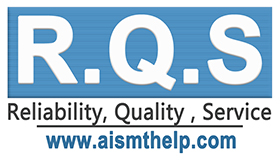Introduction to SMT Process Equipment
- Template: (Steel Mesh)
Firstly, determine whether to process the template based on the designed PCB. If the surface mount components on the PCB are only resistors, capacitors, and packaged at 1206 or above, there is no need to make a template, and solder paste can be applied using a syringe or automatic dispensing equipment; When chips containing SOT, SOP, PQFP, PLCC, and BGA packaging, as well as resistors and capacitors with packaging below 0805 in PCB, templates must be made. General templates are divided into chemically etched copper templates (low price, suitable for small batches, experiments, and chip pin spacing of 0.635mm); Laser etched stainless steel template (high precision, high price, suitable for large-scale, automatic production lines, and chip pin spacing of 0.5mm). For research and development, small batch production, or spacing of 0.5mm, it is recommended to use etched stainless steel templates; For mass production or stainless steel templates with a spacing of 0.5mm using laser cutting. The external dimensions are 370 * 470 (unit: mm), and the effective area is 300 * 400 (unit: mm). - Screen printing: (high-precision semi-automatic solder paste printing machine)
Its function is to use a scraper to leak solder paste or patch adhesive onto the solder pads of the PCB, preparing for the installation of components. The equipment used is a manual silk press (screen printing machine), template, and scraper (metal or rubber) located at the forefront of the SMT production line. It is recommended to use a medium-sized silk printing table and a precision semi-automatic screen printing machine to fix the template on the screen printing table. The position of the PCB is determined on the screen printing platform by manually turning the up and down and left and right knobs on the screen printing table, and this position is fixed; Then place the PCB to be coated between the silk screen platform and the template, place solder paste on the silk screen board (at room temperature), keep the template parallel to the PCB, and use a scraper to evenly apply the solder paste on the PCB. Pay attention to timely cleaning the template with alcohol during use to prevent solder paste from blocking the leakage holes of the template. - SMT: (Korean high-precision fully automatic multifunctional SMT machine)
Its function is to accurately install surface mount components onto the fixed position of the PCB. The equipment used is a surface mount machine (automatic, semi-automatic, or manual), a vacuum suction pen or tweezers, located behind the silk printing station in the SMT production line. For laboratories or small batches, it is generally recommended to use double headed anti-static vacuum suction pens. To solve the problem of mounting and aligning high-precision chips (chip pin spacing of 0.5mm), it is recommended to use the Samsung fully automatic multifunctional high-precision surface mount machine (model SM421 can improve efficiency and mounting accuracy) from South Korea. The vacuum suction pen can directly pick up resistors, capacitors, and chips from the component rack. Due to the adhesive properties of solder paste, resistors and capacitors can be placed directly in the desired positions; For chips, a suction cup can be added to the vacuum suction pen head, and the suction force can be adjusted by a knob. Remember to align the position of any component regardless of its placement. If the position is misaligned, the PCB must be cleaned with alcohol, silk screened again, and the component must be repositioned. - Reflow soldering:
Its function is to melt the solder paste, firmly solder the surface mounted components and PCB together to achieve the electrical performance required by the design, and precisely control them according to international standard curves, which can effectively prevent thermal damage and deformation of PCB and components. The equipment used is a reflow soldering furnace (fully automatic infrared hot air reflow soldering furnace), located behind the surface mount machine in the SMT production line. - Cleaning:
Its function is to remove substances or soldering residues such as flux that affect the electrical performance on the PCB that has been mounted. If using non cleaning solder, it generally does not need to be cleaned. For products that require low power consumption or good high-frequency characteristics, cleaning should be carried out, while general products can be exempted from cleaning. The equipment used is either an ultrasonic cleaning machine or manually cleaned with alcohol, and the position may not be fixed. - Inspection:
Its function is to inspect the soldering and assembly quality of the PCB that has been mounted. The equipment used includes magnifying glasses and microscopes, which can be placed in suitable locations on the production line according to inspection needs. - Repair:
Its function is to rework PCBs that have detected faults, such as solder balls, solder bridges, open circuits, and other defects. The tools used are intelligent soldering iron, repair workstation, etc. Configure at any position on the production line.

